Premium Only Content
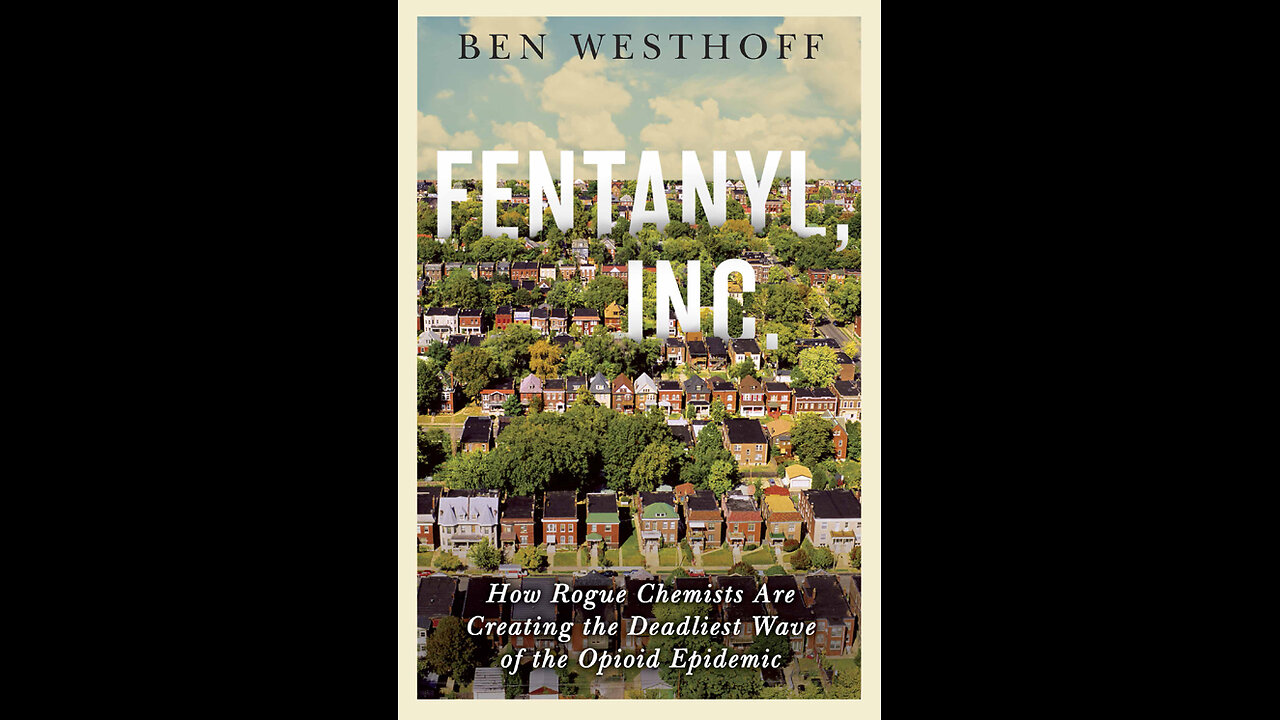
Ben Westhoff. Fentanyl, incorporated. A Puke(TM) Audiobook
Ben Westhoff.
Fentanyl, incorporated.
How Rogue Chemists Are Creating the Deadliest Wave of the Opioid Epidemic.
Introduction.
For Christmas vacation in 2014, Bailey Henke went on a road trip, driving west across the snowy plains of North Dakota. The recent high school graduate departed his apartment in Grand Forks with his roommate, Kain Schwandt. They passed the University of North Dakota, the lumber store, and the town landfill, before the city gave way to farmland. The sky began to open up.
Henke, who wore a chinstrap beard, put U2 on the stereo and watched the scenery speed by. Prone to goofy sarcasm, he had a way of putting others at ease, of putting on a brave face no matter how he felt inside. He and Schwandt knew that what lay ahead of them on this trip, that it wouldn’t be easy, but they felt optimistic. They weren’t just visiting family members for the holiday. They were traveling with a specific purpose: to get well.
The two eighteen-year-old friends had developed opioid addictions. In addition to nasty heroin habits, they had recently become consumed by an even more potent and destructive drug called fentanyl.
Most people, if they knew of fentanyl at all back then, knew of it as a medicine. Doctors had used it for decades, during surgeries, in epidurals for women during childbirth, and to help cancer patients and others in great pain. But around the time Henke and Schwandt started using it, fentanyl abuse was becoming increasingly common. Like heroin, fentanyl is a derivative of morphine, capable of producing both great pleasure and great suffering, except it can be fifty times stronger than heroin. Even a tiny amount can overwhelm the respiratory system, causing users to stop breathing.
Henke and Schwandt initially got their fentanyl from medical patches, bought on the black market. The prescription-grade patches were intended to be stuck onto one’s chest or upper arm, to relieve pain, but Henke and Schwandt didn’t use them that way. Instead, they cut them open with a knife and squeezed out the fentanyl gel onto tin foil, and smoked it through a tube. (They didn’t shoot it up because they didn’t like needles.) Later Henke acquired fentanyl in a white powder form that was made illicitly.
Fentanyl gave an incredibly powerful high, unlike anything the teens or their friends had ever experienced.
“I’d never tried it until Bailey brought some over one day,” Henke’s friend Tanner Gerszewski said. “He showed me a tiny little bit and said, ‘That’s 150 dollars worth.’” Gerszewski thought it was a rip-off until they smoked some together. “I barely even got any smoke, but I was just blown away. I was sweating. I got a call, but couldn’t see the phone well enough to answer it. Heroin is strong stuff, but fentanyl is just completely on another level.”
Even though Henke had been smoking heroin for some time, fentanyl raised the stakes. He was experiencing a rough patch in his life. Not long before, he had split with his girlfriend after going through her text messages and discovering she was seeing someone else. And though he dreamed of becoming a cop, he had recently dropped out of community college in nearby Devil’s Lake and started working at a local car dealership. Their drug habits were dragging them down, and so he and his close friend Schwandt resolved to get clean, to go through withdrawal on this road trip together, far away from their drug suppliers and their corrosive influences.
Opioid withdrawal is notoriously difficult, but the two young men had help in the form of Suboxone, a medication designed to help people beat these types of addictions. Perhaps just as important, they had each other.
Still, they expected roadblocks and soon encountered a literal one in the form of a massive blizzard. Before they could reach Minot, the western North Dakota town to which Bailey’s parents had moved, the roads became almost impassable. Finally a local police officer, taking pity on the travelers, turned on his lights and led a caravan of cars slowly down the highway, and they safely arrived at their destination. While in Minot, they hung out with Henke’s parents, went to the mall, and laughed a lot.
“We had a really nice Christmas,” said Bailey’s mom, Laura Henke.
Henke and Schwandt did their best to hide their withdrawal symptoms, which were beginning to kick in. “It was really uncomfortable,” Schwandt said. After Henke’s parents went to bed, they would stay up late and play video games, pilfering some beers or vodka from the liquor cabinet. The booze helped him sleep, Schwandt said, and Henke’s parents were none the wiser.
In fact, Laura Henke didn’t notice anything out of the ordinary. “As far as I knew, they weren’t using,” she said. The truth is, she had absolutely no idea what her son was up against. She had never even heard of fentanyl.
“I was clueless,” she told me.
Laura Henke wasn’t alone. As recently as 2015, very few Americans were familiar with fentanyl.
After the heroin and prescription pill crisis took off in the nineteen nineties and reached epidemic levels in the following decades, heartbreaking reports increasingly appeared about decimated communities, about young victims cut down in their prime.
Yet while civic leaders, law enforcement, and politicians struggled to find answers, fentanyl was quietly creating a brand-new drug epidemic, one that quickly outstripped the previous one and has become more destructive than any drug crisis in American history: worse than crack in the nineteen eighties, worse than meth in the first decade of the 2000s, worse than heroin and prescription pills in the two thousand and tens. “Fentanyl is the deadliest drug in America, CDC confirms,” read a December 2018 CNN headline.
Because of its incredible potency, fentanyl is extremely difficult to dose properly. It can be lethal at only two milligrams, an amount barely visible to the eye and far smaller than a dose of heroin. Traffickers “cut” fentanyl into other drugs to give them more kick, unbeknownst to users. Thus, many fentanyl victims think they are taking heroin, cocaine, meth, or prescription pills. But when too much fentanyl is in the mix, it kills almost instantly.
Driven by fentanyl, overdose drug deaths are, by the time of this book’s publication, for the first time killing more Americans under fifty-five than anything else, more than gun homicides and more than even AIDS during the peak years of the crisis. As of 2017, Americans were statistically more likely to die from an opioid overdose than a car accident. More than seventy thousand Americans died from drug overdoses in 2017 (the most recent year for which statistics were available), and synthetic opioids (mainly fentanyl and its analogues) were responsible for the greatest number of these deaths, more than twenty-eight thousand, compared to about sixteen thousand deaths from heroin overdose and about fifteen thousand from natural and synthetic opioids, including OxyContin (which contains the drug oxycodone). Compared to the previous year, the heroin and prescription opioid numbers were about flat, while synthetic-opioid deaths shot up more than 45 percent. Overdose death rates among African-Americans, middle-aged women, and young people continued to accelerate at alarming rates, with opioid deaths expected to increase 147 percent by 2025. Fentanyl has been cut into heroin for years, but now is often mixed into meth and cocaine, fueling rising death counts for those drugs, a troubling development, considering that Americans are much more likely to try meth and cocaine than heroin.
In Canada the numbers are similarly astronomical, and fentanyl deaths have marched upward in Puerto Rico, Australia, and many European countries as well. In 2015 fentanyl and its analogues overtook heroin to become the deadliest drug in Sweden.
“Today, we are facing the most deadly crisis in America’s history,” then US attorney general Jeff Sessions said during a 2018 press conference. “We’ve never seen anything like it.”
“Fentanyl is the game changer,” Special Agent in Charge James Hunt of the US Drug Enforcement Administration (DEA) told Vice. “It’s the most dangerous substance in the history of drug trafficking. Heroin and cocaine pale in comparison to how dangerous fentanyl is.”
In addition to fentanyl, a whole new generation of chemicals is radically changing the recreational drug landscape. These are known as novel psychoactive substances (NPS), and they include replacements for known drugs like ecstasy, LSD, and marijuana, as well as heroin. These new drugs aren’t grown in a field, or grown at all. They are synthetic, made in a laboratory. There’s nothing natural about them, and they are much more potent than traditional drugs. While the plants that yield the marijuana and heroin consumed in the United States have in recent times been grown in Mexico, these new drugs are most often manufactured in laboratories in China. According to Senate minority leader Chuck Schumer, China produces over 90 percent of the world’s illicit fentanyl.
In 2018, a Brookings Institution report stated: “Replacing drugs derived from plants (for example, heroin, cannabis) with synthetic analogues, for example, fentanyl, Spice, K2, could be the most disruptive innovation in the history of the international drug trade.”
These new drugs, fake heroin, fake marijuana, fake LSD, and fake ecstasy, represent the harshest drug challenge in our history. And yet, ironically, most of them were “born” in legitimate laboratories, created by medical scientists. Long before they were hijacked by drug traffickers, they were designed to benefit society. It took decades before they landed in the hands of people looking to get high, people like Bailey Henke and Kain Schwandt.
Grand Forks is an unlikely place to be at the center of a new synthetic-drug wave. A purple dot in a red state, where the locals say “pop” instead of “soda”, it couldn’t be further removed from the world’s drug epicenters. Though it’s one of North Dakota’s biggest cities, Grand Forks is really a small college town at heart, located on the scenic banks of the Red River. Some money from the oil boom on the other side of the state has trickled in, but the town remains quiet. The University of North Dakota’s Fighting Hawks (no longer known as the “Fighting Sioux”) play at their slick hockey arena, and Charlotte’s lefse stand at the farmers market offers a traditional Norwegian treat of mashed potatoes fried on a grill and served like flatbread.
It’s the kind of place where locals would sooner make cheerful pleasantries than burden someone with their struggles. Still, its residents have battled drug problems before. Like many Midwestern towns, it was hit hard by methamphetamines, starting in the late nineteen nineties. Homemade labs were prevalent, until police crackdowns, and revised laws banning easy access to the cold medicines favored by crank cooks, drove the labs out. Yet the demand for meth and other hard drugs persisted. The beginning of the two thousand and tens saw the local influx of the first NPS, a new designer chemical known as K2. Often called Spice or synthetic marijuana, K2 has little in common with traditional marijuana, which gives the user a mellow buzz, whereas K2 often makes people’s hearts race, or makes them overdose. Ironically, however, K2 could be bought legally in many places at this time. In fact, a head shop in Grand Forks called Discontent sold it openly.
One day while Bailey Henke was in high school, his mother, Laura, found an empty packet of K2 in the house. He lied, denying he had been using it, and instead said it belonged to his buddy Tanner Gerszewski. Suspicious, Henke’s mother forced him to sit down and watch videos of people freaking out while high on synthetic-marijuana strains like K2, which are more accurately called synthetic cannabinoids. Bailey watched as the users screamed and ran around in circles, losing their minds.
Laura also paid a visit to Gerszewski’s house, just around the corner. “I’m really scared the boys are using this,” she told Tanner’s mom, who seconded her concern and added that she was planning to have her son tested for marijuana.
Little did Tanner’s mom know that the threat of these tests was what inspired her son to use K2 in the first place. Unlike traditional marijuana, synthetic cannabinoids don’t show up on drug tests, not the kind parents give to their kids and not the kind instituted by employers. In fact, that’s what made K2 so popular, plus the fact that US lawmakers, since they didn’t yet know what it was, hadn’t made it illegal.
There were other benefits too, at least in the eyes of Bailey and Tanner. K2 was potent, their other friends said it made them feel like they were dying, and they personally enjoyed the extra jolt. “That’s what me and Bailey liked,” Gerszewski said. “For us, it didn’t stop at going to a party and drinking and smoking on the weekends. It was about getting fucked up.”
But now that he was out of high school and saddled with an opioid addiction, Henke resolved to get his life together. On the December 2014 road trip, after visiting Henke’s parents in Minot, they drove out to see Kain Schwandt’s family in Montana. It was a good time, and as they drove back eastward they congratulated themselves on accomplishing their goal. “We had both gotten clean,” said Schwandt.
Around the same time in 2014, in Portland, Oregon, a woman named Channing Lacey was sliding into her stiletto heels. The twenty-seven-year-old mother of two worked as a dominatrix, controlling a stable of male slaves she had met on the Internet. Bespectacled and clad in black leather and fishnet stockings, she would beat them with whips, step on them with her high heels, or even apply clothespins, which were attached to a rope, all over their bodies and then rip them off with a flick of the rope. For the privilege, men would pay 150 to 200 dollars an hour.
Lacey enjoyed her dominatrix alter ego. “I was into it,” she said. “It got a bunch of my aggression out.” This work was an escape from the rest of her life, which was becoming increasingly consumed by fentanyl. She was not only hooked on it but was assisting in what might have been, at the time, the country’s biggest illicit fentanyl operation.
Growing up in Las Vegas, Lacey had dropped out of high school and gotten pregnant, in 2004, at age seventeen. After her son was born she was prescribed the opioid Vicodin and soon became addicted to pain pills. She began “doctor shopping” to get her fix. “I’d go to hospitals, I’d go to dentists, I’d get different prescriptions,” she said, including those for OxyContin, an even stronger opioid. “I manipulated the system really bad.” She even went so far as to marry a man in order to get on his health insurance.
Lacey moved to the Portland area around 2005, and a year or so later descended further into drug abuse, using meth and heroin. She got clean and had a second son but then went back to heroin in the early two thousand and tens, using more heavily than before. Her habit led her to a dope house in Vancouver, Washington, just across the Columbia River from Portland, where she met an intriguing man named Brandon Hubbard. Though he was more than ten years her senior, Lacey found in him a kindred spirit. Short, with brown hair and a piercing stare, Hubbard also loved BDSM (bondage, domination, sadism, masochism) and possessed what Lacey considered to be a fierce intelligence. “His IQ level is genius,” she said.
Hubbard was also hooked on pain pills. His right arm was paralyzed from an injury sustained while riding a bike years earlier, and he had been prescribed heavy doses of OxyContin. Eventually he moved to street heroin, which was cheaper.
Caught up in a druggy, infatuated haze, Hubbard and Lacey became joined at the hip. “We were together every day after that,” Lacey said, adding that her mother, who lived nearby, looked after her kids. “I was a really bad addict. I was out of control.”
Despite her dexterity with a whip, Lacey didn’t hold a steady job, and Hubbard wasn’t really working either. To feed their heroin addictions, Hubbard sold his OxyContin pills. It was a small-time drug hustle, and he soon shifted to selling black tar heroin, working with a local man who had a reliable connection and a good price.
Hubbard’s business really took off, however, when he moved onto the Dark Web around 2013. This disguised Internet protocol was quickly helping local dealers like Hubbard become wealthy, international players. And it was enabling tech-savvy teenagers to get potent drugs delivered right to their front door by the mail carrier.
In the past, to obtain illicit drugs, a buyer often had to meet up with a dealer in an alleyway or on a dangerous street corner. But as of the early two thousand and tens one doesn’t even have to leave the bedroom, it’s as easy as booting up a smartphone or laptop. To access the Dark Web, one needs a special browser, such as Tor, which disguises one’s location and identity and makes it possible to load Dark Web sites. Because these sites have hidden IP addresses, it’s almost impossible to figure out who’s running them.
Not everyone on the Dark Web is a criminal. Facebook even has a presence, to circumvent censors in countries where it’s banned, like China. But the Dark Web is best known for its illegal emporiums, which run the gamut from extremely untrustworthy to quite professional, and sell almost every form of vice imaginable: credit card numbers, fake Rolexes, pornography passwords, weapons, and malware. “Make 3,000 plus dollars a Month as Fake Uber Driver,” read one recent listing. It’s stunningly easy to buy drugs, and not just traditional drugs like cocaine, ecstasy, and marijuana, but powerful NPS like fentanyl and K2.
The most famous of these markets, Silk Road, was founded by a Libertarian-leaning, magic-mushroom selling, tech autodidact named Ross Ulbricht and rapidly became a billion-dollar enterprise. Using sophisticated programming techniques to cover his tracks, Ulbricht established Silk Road in 2011 and eluded law enforcement for more than two years. A rogue DEA agent, selling him tips for 50,000 each, helped him evade capture. Growing increasingly paranoid and allegedly commissioning six murders, Ulbricht was finally arrested at a San Francisco library in 2013 and eventually sentenced to life in prison. In Silk Road’s stead, another Dark Web behemoth called AlphaBay grew to be even bigger, until it too was shut down, in 2017.
But new markets keep sprouting up. They are really not much different from Amazon, right down to the reviews of sellers. Customers select their wares, give an address, and pay by Bitcoin, the cyber currency preferred by these markets because it’s difficult to trace. Their discreetly wrapped items arrive soon after in the mail.
Brandon Hubbard utilized the Dark Web and got rich. At first he sold heroin. His vendor name on Dark Web sites such as Evolution and Agora was “PdxBlack,” referencing Portland’s airport code and his product, black tar heroin, a sticky strain known for its dark impurities and common on the West Coast. Channing Lacey helped him package up the product.
Hubbard prided himself on keeping prices low, and soon orders began pouring in from around the country. He touted his own success on Reddit, a forum commonly used by Internet drug traders, claiming to be on his way to becoming the “BTH King of the Dark Net!”
Fentanyl only upped the ante. Lacey said they first encountered the drug in 2014, when Hubbard received a package from someone he had been chatting with on the website Topix. The drug knocked Lacey and Hubbard on their backs. “I did a pinhead, or maybe a bit more, and I overdosed right away,” she remembered, adding that this only increased its appeal. “In the drug addict’s mindset you’re like, ‘This stuff is fucking amazing,’ because it’s so much stronger than heroin.”
With longtime use, heroin doesn’t continue to make users feel euphoric, it simply eases withdrawal symptoms. Many are drawn to fentanyl because it brings the euphoria back. “Heroin wouldn’t even get me past sick anymore,” said Bree, an addicted user from East Alton, Illinois, who prefers not to use her real name. “But fentanyl would always get me completely off sick, and high, and it always took less.”
For dealers, the appeal of fentanyl is also clear: it is cheaper and more discreet, since it comes in smaller packages than heroin. And so Brandon Hubbard began ordering more. His main source was a distributor named Daniel Vivas Ceron. Originally from Colombia, Ceron had come to Canada as a child, the fact that he was currently locked up in a Quebec prison for attempted murder somehow didn’t slow him down.
Allegedly working from prison with another incarcerated man, Ceron didn’t touch the fentanyl himself, but since he somehow had access to the Dark Web in prison, he didn’t have to. Using aliases, including Joe Bleau, and acting as a middleman, he ordered fentanyl from China and then paid someone on the outside to complete the transaction. Ceron’s cut from a sale might be 10,000 dollars, while his co-conspirator on the outside might get 7,000 dollars.
Once the package from Ceron arrived, Lacey helped Hubbard bag up the portions and prepare the product for shipment. They cut it with mannitol, a diuretic and laxative that counters the constipation that often comes from opioid use. It also increased their profit margins. The product was a hit, and Hubbard and Ceron were in touch frequently, texting each other using encryption programs that scramble messages and make them harder for law enforcement to read.
Before long, Hubbard claimed to be the biggest illicit fentanyl dealer in the country, and Lacey believed him. “He was moving a lot of packages,” she said, and his customers were paying huge quantities of Bitcoin, which he exchanged for hard cash. He was careful not to live too lavishly, he wanted to stay under the radar of law enforcement, but he splurged on some things, like a new Volkswagen GTI.
In November 2014, Hubbard placed an order with Ceron for 750 grams of fentanyl. Since that is less than a kilo, it might not sound like a lot, but considering a pinhead can cause an overdose, it was a colossal shipment, with a street value of 1.5 million. What Hubbard didn’t realize was that law enforcement was on to him, having accessed the account of a boy who had purchased fentanyl from him on a Dark Web site called Evolution. Homeland Security was monitoring his activities.
Almost immediately after Bailey Henke and Kain Schwandt returned from their road trip they fell off the wagon. Despite their efforts to quit fentanyl, they couldn’t stay clean long. It didn’t help that the day of their return was New Year’s Eve, and everyone was partying. Henke had some drinks that night and took some Xanax. On January 2, 2015 he went on an even bigger bender.
The new calendar brought brutally cold weather to Grand Forks. The temperature hit fifteen degrees Fahrenheit that day and the next day dropped a full thirty degrees farther. Henke and Schwandt stayed out of the cold and entertained themselves by doing drugs and playing video games. With another friend they went to the house of a local dealer named Ryan Jensen. In his bedroom, they played Call of Duty and smoked fentanyl.
Nineteen-year-old Jensen was under house arrest at the time, having been convicted of drunk driving. Formerly the neighborhood pot dealer, Jensen had become a Dark Web expert himself, procuring substances right off his computer. (To be safe, he had the packages sent to the address of a guy he knew in town.) Using the Dark Web site Evolution, Jensen ordered twelve grams of heroin and one gram of fentanyl from a dealer named PdxBlack, Brandon Hubbard. Of that one gram, he sold a quarter to Henke.
Yet this was different than the pharmaceutical-grade fentanyl Henke usually smoked, the kind extracted from medical patches. This was white powder fentanyl. Since it had been cut with mannitol, it was impossible to know exactly how potent it was. Nonetheless, while playing video games that January 2, Henke was hitting it hard.
Still, he seemed to be OK, and soon afterward Kain Schwandt agreed to drop him off at Tanner Gerszewski’s garden-level apartment, in a squat building with stained green carpeting by a trailer park. Since the days when the teens had smoked K2 together in high school, Gerszewski’s drug habit had grown worse as well. Though he maintained a job as a plumber, he was hooked on heroin and had already smoked some by the time Henke arrived, in addition to drinking and dropping acid. Still, Henke seemed to be even more intoxicated than his friend, and he threw up immediately upon walking in the door.
Henke was clearly affected, but this didn’t especially faze Gerszewski. “He seemed high, but he didn’t seem in bad shape,” he said. “Me and him had seen each other all through high school in very bad states, fucked up, throwing up.”
They dipped into the fentanyl Henke had bought from Jensen, and powered up the Xbox to play a mixed martial arts video game. A few other people Gerszewski knew were there too, but they left at some point, leaving the two friends alone with their drugs. As midnight approached, Henke’s energy flagged. In the midst of their game, Gerszewski noticed that Henke’s avatar had stopped moving. His friend looked like he was nodding off.
Henke insisted he was fine. They continued playing until, again, Henke’s avatar stopped moving. “I’m just a little tired,” Henke said.
When his character froze again, Gerszewski saw that Henke’s eyes were shut and he was growing pale. He tapped him, and then nudged him, getting no response. Gerszewski feared Henke had overdosed, but was so high himself that he had a hard time reading the situation. Was this a dream? Was Henke faking it? He grabbed and shook him.
Now realizing the depth of the problem, Gerszewski made a mistake. Instead of immediately calling 911, he called Schwandt, who came over and attempted CPR. When an ambulance finally arrived, it was too late.
Just after midnight, Bailey Henke was pronounced dead. About three hours later a police officer knocked on his parents’ door in Minot. He told them the bad news, but Laura and Jason Henke couldn’t get to Grand Forks until the next evening to begin the mourning process. Another big snowstorm had closed down the highway.
Bailey Henke’s death triggered the widest-ranging fentanyl investigation in history. Known as Operation Denial, it’s an international endeavor begun in 2015 and still ongoing at the time this book went to print, involving agencies from the local Grand Forks police department to the Royal Canadian Mounted Police to the US Border Patrol and the DEA. It has tracked down people from every step in the fentanyl supply chain that killed Henke and charged thirty-two.
These include Ryan Jensen, who in 2016 received a prison sentence of twenty years for charges including drug distribution resulting in death, Brandon Hubbard, who that year received life in prison, and Daniel Vivas Ceron, who was still awaiting trial. Investigators believe Hubbard earned millions from his Dark Web sales of fentanyl and heroin, and that his collaboration with Ceron was responsible for twelve fentanyl overdose victims and four deaths around the country, including Bailey Henke and another Grand Forks teenager, nineteen-year-old Evan Poitra, who died in July 2014. Others on the periphery of the wide-ranging case were convicted as well, including Kain Schwandt, who spent about a year and a half behind bars, for conspiracy to possess illicit drugs with intent to distribute, and Channing Lacey, who snuck in fentanyl when she went to jail and distributed it there, causing a fatal overdose. She received eleven years for drug distribution resulting in death. For its efforts, in November 2018, Operation Denial received special recognition from the White House’s Office of National Drug Control Policy.
Yet for all of Operation Denial’s convictions, it has not been able to snag the person at the very top of the drug pyramid, Jian Zhang, the Chinese man who is believed to have manufactured the fentanyl that killed Henke and others. Zhang is a chemical manufacturer born in 1978 and operating out of Shanghai. His company claims to make benign food additives, including spices and soy products, but in April, 2018, Attorney General Jeff Sessions traveled to Fargo to unseal an indictment against Zhang, accusing him of leading a drug ring that manufactured fentanyl sold throughout the United States. The indictment listed eleven states, including North Dakota and Oregon.
Zhang has been pursued with the full weight of not just the US Department of Justice but also the Treasury, which designated him a kingpin under the Foreign Narcotics Kingpin Designation Act, blocking his US financial assets and those of his company, Zaron Bio-Tech (Asia) Limited. “Combating the flow of fentanyl into the United States is a top priority of this administration,” Sigal Mandelker, under secretary for terrorism and financial intelligence, said in a statement. “This action will disrupt the flow of fentanyl and other synthetic opioids into the United States.”
Yet the United States couldn’t jail Jian Zhang, because China refused to turn him over. The country has no extradition treaty with the United States, and China does not believe Zhang to be a criminal. Yu Haibin, director of precursor chemical control at China’s Narcotics Control Commission, said that although the country’s police were investigating Zhang, they did not have “solid evidence” that he broke Chinese law. Further, Chinese officials are quick to note, most NPS were invented in labs in Europe and the United States. And this isn’t just a problem of production, it’s one of consumption. China believes America needs to control its drug problem.
Considering that fentanyl has been banned (except for medical use) in China for decades, it’s unclear why China could not, or simply did not, prosecute Zhang. But there’s an even bigger problem. Many of the other NPS killing Americans, Europeans, and others are still 100 percent legal in China, even while banned in the West. In recent years, some of the biggest new drug kingpins can’t be successfully prosecuted. The Pablo Escobars of today are coming out of China, and they don’t have to worry about being imprisoned by their government. They can often operate free and in the clear, within the boundaries of their country’s own laws. Whenever a deadly new drug is made illegal in China, manufacturers simply tweak its chemical structure and start producing a new drug that is still legal. Many fentanyl analogues and synthetic cannabinoids have been made this way. Though Chinese authorities have pledged to crack down, and in April, 2019, said they would ban all fentanyl analogues, their efforts so far have barely dented the country’s clandestine international trade.
The rise of fentanyl and NPS happened quickly. When I started investigating these new drugs in 2013, fentanyl wasn’t on the public radar at all. I had never heard of it. In fact, I only came to this story by accident.
Living in Los Angeles at the time, as the music editor at LA Weekly, I was investigating why so many people were dying at raves. Electronic dance music (EDM) had recently exploded in popularity, and with its rise came increasing deaths, mostly young kids experimenting with ecstasy.
I wasn’t new to the scene. In the late nineteen nineties I partied in abandoned San Francisco warehouses and deserted beach spots as part of the first wave of American electronic dance music, people then called it electronica. These events were usually populated only by those who had garnered a personal invitation from a friend of the organizer, to get directions one had to call a secret phone line. On the scene, maybe a few dozen people would dance to cutting-edge, drum-machine-driven beats. The drugs, ecstasy and LSD, made participants especially appreciate exotic rhythms. These ravers and club kids wore fluorescent colors and giant goggles and chewed on pacifiers or breathed Vicks VapoRub beneath surgical masks to enhance the sensation of ecstasy.
I, along with most Americans, dropped out of the scene by the middle of the first decade of the 2000s. EDM’s popularity continued unabated in Europe, while in the United States many stars saw their music fall off the charts. But by the two thousand and tens electronic dance music was back and bigger than ever, drawing tens of thousands of neon-clad kids to raves. The new raves couldn’t have been more different from the underground parties I had attended. No longer secret affairs featuring obscure sounds, today’s EDM events feature celebrity DJs spinning in mammoth venues such as stadiums and racetracks. Electric Daisy Carnival, now held every spring in Las Vegas, draws some four hundred thousand attendees. In the music industry, which had been decimated by audio-sharing services and still hadn’t recovered in the early two thousand and tens, EDM was a shining star, awash in profits and adored by millions of young fans. And Los Angeles was the center of its universe. EDM was being celebrated in the national media as a big neon party that never ended.
And then I heard about the deaths.
In 2010, fifteen-year-old Sasha Rodriguez fatally overdosed at Electric Daisy Carnival at the LA Coliseum, reportedly from ecstasy. Local politicians revolted, and the event was forced to relocate to Las Vegas. A Plymouth State University student named Brittany Flannigan overdosed and died in late August 2013 after attending a Boston EDM concert featuring the popular DJ Zedd, and just days later a University of Virginia student named Mary “Shelley” Goldsmith passed away as well. Both were nineteen, and reports said they had taken “Molly.”
At the time, many believed Molly was pure MDMA, the drug found in ecstasy, also known as 3,4-methylenedioxymethamphetamine. But this didn’t seem right. The Molly users I witnessed dipped their fingers into a plastic bag of white powder and then licked it off, repeating the process every ten minutes or so. Some would snort it. This was different from my heyday on the rave scene. Back then, the ravers I knew simply took a pill and would be happily rolling for the whole night.
With mega-raves came increasing numbers of casualties. At New York’s Electric Zoo over Labor Day weekend in 2013, a twenty-year-old University of New Hampshire student named Olivia Rotondo and a twenty-three-year-old recent graduate of Syracuse University named Jeffrey Russ both collapsed and died, reportedly after taking Molly. At the Hard Summer festival in August 2015, outside Los Angeles, two young women fatally overdosed and forty-nine people had to be taken to emergency rooms. The event sparked a Los Angeles Times article quoting emergency-room doctors as saying that raves on LA-county-owned property should be banned, at least temporarily. “If the county wants to make money while people are dying and medically compromised,” said Doctor Philip Fagan Junior, emergency department director at Los Angeles’s Good Samaritan Hospital, “they should come out and say it.”
These weren’t just freak accidents. The more I covered the EDM scene, the more I realized how widespread the fatalities were. Six people overdosed and died at a single EDM festival in Malaysia in 2014, while just about every major US EDM concert, including Electric Daisy Carnival, Nocturnal Wonderland, Together as One, Monster Massive, Coachella, Ultra, and Electric Forest, saw festival-goers die from drug use. No statistics were available about the number of deaths at EDM festivals. But no one could dispute a disturbing fact: the number was growing.
Officials blamed ecstasy, a word many used synonymously with Molly, but that contradicts the relatively benign nature of the chemical. “You don’t see many ecstasy overdose deaths,” confirmed Emanuel Sferios, the founder of DanceSafe, a Denver-based organization dedicated to harm reduction at music festivals and other events. He estimates that MDMA deaths per year in the United States number around twenty, not just kids at raves, but everyone, which is a tiny fraction of total drug deaths. Further, large numbers of the MDMA deaths weren’t brought about because users’ dosages were too high, he adds, but because they suffered from heatstroke, from dancing continuously without drinking water or wearing themselves out beneath the hot sun.
Molly, however, is not ecstasy as it has been known. “Molly means, like, anything now,” a Dallas toxicologist named Ashley Haynes warned. It might contain a small amount of MDMA but most likely contains a hodgepodge of bizarre drugs with complicated chemical names users have never heard of, including so-called “bath salts.” It turns out, she added, that there are hundreds of these new drugs. Almost every traditional drug, be it marijuana, cocaine, ecstasy, LSD, or heroin, is being replaced by new, sinister versions made in laboratories.
Further, as I discovered, they were being distributed in new ways, like the Dark Web, leading to an entirely upended drug landscape that nobody seemed to understand, not the parents of children who had lost their lives, not first responders, not cops, and certainly not politicians. The people consuming many of these bastardized types of speed, psychedelics, and other substances are not traditional hard-drug users. They are high school kids, college students, and recreational enthusiasts best described as drug nerds. Some know what they are doing, using sophisticated Internet forums to expand their minds and explore intellectual pursuits. A great many, however, have no idea just how potent and dangerous these new drugs can be.
NPS are hard to spot, as they can come as powders, crystals, pills, or liquids, resembling traditional drugs, or even sprayed onto dried sage to be smoked like marijuana. Sometimes they are even professionally packaged and sold in stores, mislabeled as “bath salts” or “potpourri.”
These new drugs aren’t just confounding users. In recent years, law enforcement agencies have seized exponentially larger quantities of NPS, but this is a drop in the bucket. By the time police get wise to these chemicals, rogue manufacturers have already moved on to new formulas, because when it comes to creating synthetic drugs, the mathematical possibilities are endless. By varying a molecule just slightly, rogue chemists can come up with a whole new drug, one that is still legal because it hasn’t yet been scheduled (controlled and restricted). After the chemicals sold as K2 and Spice were banned, for example, a whole new set of fake marijuana blends immediately popped up in their place.
“Over the past several years, the DEA has identified hundreds of designer drugs from at least eight different drug classes,” DEA special agent Elaine Cesare observed. “There are a seemingly infinite number of possible new chemical compounds that are on the horizon.”
Many law enforcement officers use the same expression when describing their attempts to stop these drugs: a game of whack-a-mole. Whenever one new drug is contained, another simply pops up in its place. The UN Office on Drugs and Crime (UNODC) has called the synthetics industry “hydra-headed.” “When you control one derivative of fentanyl, another derivative comes out, which is not on the control list. Criminals are always one step ahead of law enforcement,” said Tun Nay Soe, of the UNODC.
This book is the result of my interviews with 160 people, visits to drug sites and laboratories all over the world, and research drawn from hundreds of source materials. In some cases, often to preserve their own safety, subjects have requested I use pseudonyms, they are identified as such in the text.
While reporting the story of NPS, I met people suffering from fentanyl and other drug addictions, some destitute and living on the streets, others functioning in well-paid jobs. I spent time with psychonauts, thrill seekers who try brand-new drugs that have never been taken before. I learned how these chemicals are marketed and sold, from the factories to the streets to the search engine. I spent months on every step of the drug-distribution ladder, with everyone from low-level dealers to big-time traffickers, from the industrial manufacturers to the inventors of the drugs themselves. I went back over the details of my close friend Michael “Helias” Schafermeyer’s death in Baltimore, from fentanyl combined with alcohol, in 2010, long before I knew what fentanyl was.
I consulted politicians, police, DEA agents, and international drug policy makers, who would like to put these traffickers away forever, and I spoke with counselors, doctors, activists, and policy wonks, some of whom believe these drugs should be legal. I corresponded with two infamous, now-imprisoned LSD kingpins who worked together out of an abandoned missile silo in Kansas, the demise of their operation in 2000 may have inadvertently fueled the rise of a new hallucinogen whose effects are far worse than LSD.
I learned how a brilliant Belgian chemist created a multibillion dollar pharmaceutical company from scratch but in the process unleashed a horror like nothing ever seen before. I prowled dangerous Saint Louis streets with an armed former fentanyl dealer to understand how the epidemic started, tracing the history to Mexican cartel affiliates who traveled north to spread what had originated in China into inner cities all over the United States.
Finally, I infiltrated a pair of Chinese drug operations, one a sophisticated laboratory operation distilling outsize quantities of the world’s most dangerous chemicals in industrial-size glassware, and the other an office of young, cheery salespeople, who sat in rows of cubicles and sold fentanyl ingredients to American dealers and Mexican cartels.
The latter company didn’t even bother operating clandestinely, instead doing its business out in the open. That’s because, as I soon learned, the Chinese government offers subsidies and tax rebates to chemical companies that are making these drugs. It’s a case of financial incentives gone horribly wrong, one that seems likely to drive a further wedge between two powerful countries that are already extremely wary of each other.
“We need to make very clear to the Chinese, that this is an act of war. You are sending this into our country to kill our people,” said former New Jersey governor Chris Christie, who headed President Trump’s opioid epidemic commission, in the fall of 2017, speaking about fentanyl. China is “sending that garbage and killing our people,” added President Trump, at an August 2018 cabinet meeting. “It’s almost a form of warfare.”
The former director of the DEA’s Special Operations Division, Derek Maltz, used stark terms to describe the fentanyl-driven opioid epidemic. “Where it becomes a national security emergency is the connectivity between the drug traffickers and the terrorists that are out there that are trying to destroy our way of life,” he said in November 2018.
Such rhetoric aside, America’s problem with fentanyl and other new drugs undermines its national security as much as, perhaps more than, any other issue in the headlines, with the wrecking of families and relationships, the massive casualty toll, and the billions needed to fight the scourge. Many American political and thought leaders have castigated China’s negligence, some even believe it is purposeful.
Addressing the problem is extremely complicated, however, because this is a story that goes well beyond drugs. It’s a political story about the clashing of the world’s biggest superpowers. It’s an economics story about the deception of giant pharmaceutical companies. It’s a higher-education story about how university science can go horribly wrong. It’s a tech story about incredible innovation happening in real time, a business story about marketing genius. It’s a physiological and philosophical story about the human body in conflict with the human mind.
And it’s forcing us to rethink our assumptions. The drug economy no longer just benefits the producers and dealers. Nowadays it involves the otherwise innocent people who deliver our mail, who program Internet algorithms, who design medicine in chemistry labs, who scrub toilets at drug companies.
More than anything, this is a story of global capitalism run amok. The new-drugs trade is growing for the same reasons the world economy is growing, increasing speed of communications, Internet technology, and shipping, relaxed barriers to trade, and, of course, the ever-present pressure for higher profit margins. And if global capitalism is hard to control, the new-drugs trade is nearly impossible, given that it is peopled by local actors in jurisdictions with no overlap interacting with far-flung markets and supply chains.
Part One.
The New Drugs.
One.
Americans have used and abused opiates for as long as America has existed. Opium was administered to Revolutionary War soldiers, and for much of our history it was one of the only medicines available, given to colicky babies, the dying elderly, and everyone in between. Misuse may even have been more common in previous centuries than now, and the problem grew particularly acute after the Civil War, during which morphine was used to soothe the injured. In fact, the term soldier’s disease was coined to describe opiate addiction. At the dawn of the twentieth century, one could buy opium from the Sears, Roebuck catalog, yet addiction was so widespread that President Theodore Roosevelt appointed an opium commissioner in 1908. During the industrial revolution the problem ravaged the United Kingdom as well, and the country sought to balance its trade deficit by using its British East India Company to ply opium in tremendous quantities to the Chinese, causing a pair of wars.
Never, however, has an opiate, or any other drug, for that matter, killed so many annually as the fentanyl epidemic. It is the next phase in the opioid crisis that began with the overprescription of opioid painkillers, which was catalyzed by a short letter published in a 1980 issue of the New England Journal of Medicine. Written by a doctor named Hershel Jick and his graduate student, Jane Porter, the letter discussed the thousands of cases they had examined in which patients received opioid narcotics. In only four cases had anyone become addicted, they claimed, and only one of those was troubling. “We conclude that despite widespread use of narcotic drugs in hospitals, the development of addiction is rare in medical patients with no history of addiction.”
The above sentence was one of only five in Jick and Porter’s letter, which was far from comprehensive. It referenced only patients who received small doses and were closely monitored by their doctors, not outpatients taking home bottles of ultra-strong prescription drugs. Nonetheless, the letter had great influence, academics cited it in more than six hundred studies, and doctors and pharmaceutical companies pitching their products deferred to it as well.
During the nineteen nineties another sea change swept American medicine: the desire to treat patients more humanely. Traditionally, doctors focused on four “vital signs” when caring for patients: their temperature, breathing rate, blood pressure, and pulse rate. But in the mid-nineteen nineties the American Pain Society called for pain to be considered a new “fifth vital sign.” Whereas doctors were previously reticent to prescribe opioids because they considered them addictive, the ramifications of the Jick-Porter letter caused their thinking to shift: if opioids were, in fact, safe, patients should not be consigned to agony. “It was not only okay, but it was our holy mission, to cure the world of its pain by waking people up to the fact that opiates were safe,” Boston pain specialist Doctor Nathaniel Katz told journalist Sam Quinones for his book Dreamland: The True Tale Of America’s Opiate Epidemic, describing the new conventional wisdom that took hold. “All those rumors of addiction were misguided. My fellowship director even told me, ‘If you have pain, you can’t get addicted to opiates because the pain soaks up the euphoria.’”
The Sackler family, the owners of the company responsible for OxyContin, became billionaires many times over thanks to this new perspective. Long before the drug’s creation, Arthur Sackler, a physician by training, had been a pioneer in the field of pharmaceutical advertising. In 1952, Arthur and his brothers, Raymond and Mortimer, purchased the company that became Purdue Pharma. With the inherent conflict of advertising and pharmaceuticals in its DNA, Purdue brought OxyContin to market in 1996, touting its benefits as a slow-release pill that contained high doses of the opioid oxycodone, contin means “continuous.” Since the pills lasted twelve hours, the company claimed, patients would need only two per day, fewer than comparable medicines. Addiction, it promised, was extremely rare.
Purdue launched a huge marketing blitz, deploying hundreds of salespeople to sway doctors and dispense free promotional items, including pedometers, headgear, and even an OxyContin-branded music CD, Swing Is Alive, with a pair of dancing geriatrics on the cover. Purdue sent doctors to tropical locations for “pain management seminars,” those who attended these events in 1996 were more than twice as likely to write OxyContin prescriptions as doctors who did not. Although originally OxyContin was promoted for use by cancer patients, according to internal reports, the company saw that market as too small. Annual sales might top out around 260 million dollars, whereas if Purdue was able to sell to patients with a host of chronic conditions, the annual market was closer to 1.3 billion. Sales rose from just under 50 million in 1996 to more than 1 billion by 2000. Oxycodone became the most prescribed drug in the United States.
Yet for many patients, the dosages didn’t last an entire half day, and they began experiencing withdrawal symptoms when the pills wore off hours early. And while Purdue salespeople told doctors that less than 1 percent of OxyContin patients would become addicted, Purdue’s own study from 1999 found the rate to be 13 percent.
Misuse became rampant. Many users crushed the pills, known by some as “hillbilly heroin,” into powder form to snort or make into an injectable solution, so they could get high faster. Others fashioned themselves into drug dealers and sold them, the going rate on the street for OxyContin was one dollar per milligram, meaning that an eighty-milligram pill sold for eighty dollars.
For some, using OxyContin as directed caused anguish. Patients recovering from knee surgery or a root canal, or experiencing chronic pain from a condition like rheumatoid arthritis, gained temporary relief but soon confronted a new problem: when their prescription ran out, they were addicted. Many tried to “doctor shop” for more pills, but some who couldn’t do that, or couldn’t afford the pills, turned to heroin, which is cheaper, as low as five dollars a dose in some places, and satisfied their opioid cravings. Before they knew it, they were regularly visiting dangerous parts of town to meet heroin dealers.
This is a complex problem. The vast majority of legitimate users of OxyContin and other opioid medicines receive the intended benefit. For the most part, people dying from oxycodone overdoses tend to get the pills on the black market, not their doctors. Nonetheless, Purdue bears “the lion’s share” of the blame for America’s opioid crisis, according to Andrew Kolodny, the codirector of the Opioid Policy Research Collaborative at Brandeis University. “If you look at the prescribing trends for all the different opioids, it’s in 1996 that prescribing really takes off,” Kolodny said, referencing the year OxyContin debuted. “It’s not a coincidence. That was the year Purdue launched a multifaceted campaign that misinformed the medical community about the risks.” The company, found guilty of playing down OxyContin’s abuse potential, paid 600 million in fines in 2007. Considering the billions it had earned, and would continue to earn, this seemed a pittance. No one from the company received jail time, causing then US senator Arlen Specter, from Pennsylvania, to take issue with the sentence. “I see fines with some frequency and think that they are expensive licenses for criminal misconduct,” he said at a Senate hearing. “I do not know whether that applies in this case, but a jail sentence is a deterrent and a fine is not.”
In 2010 Purdue released a new version of OxyContin that couldn’t be crushed up and injected, which the company believed would help stymie abuse. The FDA agreed. However, this new pill may have worsened the opioid crisis. In a 2015 study, psychiatrists at Washington University in Saint Louis interviewed 244 people who had sought treatment for addiction to the new version of OxyContin. The study showed that while many were able to kick their OxyContin habit, about one-third of the subjects migrated to other drugs. Seven out of ten in this group started taking heroin. Further, in the early two thousand and tens, prescription narcotics became harder to obtain. This, along with heroin shortages, likely accelerated fentanyl use in the United States, concluded a 2018 study at the University of California, San Francisco. (Fentanyl is an odd case, the UC San Francisco researchers noted, since its rise wasn’t driven because people wanted it, they just feared withdrawal and didn’t have access to other opioids. As one indication of this, unlike most drugs, which develop street names, smack, weed, Molly, fentanyl doesn’t have much in the way of nicknames.)
Charges have also mounted against Insys Therapeutics, makers of the prescription fentanyl spray Subsys. The company has been sued by many parties, including state governments and individual patients, and its executives have been indicted (and in some cases pled guilty) of bribing doctors to prescribe Subsys. The spray is approved only for cancer patients, but individual doctors have been accused of prescribing it for lesser ailments and accepting gratuitous kickbacks. A former Insys sales rep named Maria Guzman detailed in her 2013 whistleblower lawsuit that the company provided doctors with stock options, trips to a gun range, fancy dinners, and even hired a woman specifically “to have sexual relations with doctors in exchange for Subsys prescriptions.” The FDA had information about doctors prescribing Subsys and other fentanyl medications for noncancer patients but did little to stop it, according to documents obtained by Johns Hopkins public-health researchers.
Operating under the public radar as the crisis ramped up were drug distributors like Cardinal Health, AmerisourceBergen, and McKesson, which filled gigantic opioid prescription orders from corrupt doctors operating pill mills. For example, a drugstore in the small West Virginia town of Kermit (population: four hundred) received nine million hydrocodone pills in only two years. A 2017 investigation by television news program 60 Minutes and the Washington Post outlined this practice and helped expose how Congress allowed it, and even encouraged it. As laid out by whistleblower Joe Rannazzisi, the former head of the DEA’s Office of Diversion Control, a 2016 law called the Ensuring Patient Access and Effective Drug Enforcement Act, signed by President Barack Obama, made it harder for the DEA to freeze suspicious opioid shipments by these drug distributors. The law had been sponsored by Pennsylvania representative Tom Marino, who, at the time of the investigation’s publication, was President Trump’s nominee for drug czar. He was forced to withdraw.
Did Obama realize the law, which Congress quickly green-lighted, without debate, would have such devastating consequences? No, concluded an October 2017 Washington Post story: “Few lawmakers knew the true impact the law would have,” it reads, adding that the White House was also unaware. Nonetheless, according to a 2019 Washington Post analysis, the Obama administration did not take sufficient measures to stem the fentanyl crisis as it developed.
Pharmaceutical companies making opioids, among them Purdue, as well as others along the supply chain, including distributors, find themselves facing major lawsuits from states, cities, and other groups, supported by the US Justice Department. The groups seek something similar to the big tobacco settlement of 1998, which required cigarette companies to pay billions annually to the states, and limited the industry’s marketing, to compensate for the heavy costs of dealing with the health effects of smoking.
The state of Florida has also included the country’s biggest chain pharmacies, Walgreens and CVS, in its lawsuit, because of their roles in selling opioids, and Oklahoma is targeting Johnson and Johnson for its role in the crisis, including selling fentanyl through its Janssen subsidiary.
By the mid-two thousand and tens prescription pill deaths in the United States began leveling off, but “for every life we save from a prescription overdose,” said Joel Bomgar, vice chairman of the House Medicaid Committee in the Mississippi House of Representatives, “four more are dying from switching to heroin and fentanyl.”
Fentanyl is frequently cut into heroin but, increasingly, fentanyl is also being pressed into pills that look exactly like name-brand prescription tablets. Raids across the United States have turned up operations in houses and apartments that turn fentanyl powder into tablets using specialized presses. Both the drugs and the machines are bought from China. These operations can make thousands of pills per hour. They stamp the pills with the OxyContin or Percocet logo, making them indistinguishable. This trend has quickly gained steam. In Arizona alone, the DEA reported seizing more than 120,000 fentanyl pills in 2017. And in May 2018, three twenty-one-year-old brothers from Raleigh, North Carolina, identical triplets named Atsouste, Etse, and Atsou Dossou, were arrested, accused of running a vast drug operation, which included making and selling thousands of fake Xanax bars cut with fentanyl. “The issue of counterfeit drugs is more complex and extensive than what can be seen on the surface,” retired Phoenix detective sergeant David Lake said at a roundtable discussion on the opioid crisis held in August 2018. “The constant threat from online sales, illegal pharmacies and street sales is stretching the limited law enforcement resources dedicated to this issue in many states and communities to the breaking point.”
The dosages of these fake pills vary greatly. One might have ten times as much fentanyl as the next. Investigators believe such counterfeit pills were responsible for the death of music star Prince, about one hundred white pills found on his property looked exactly like Vicodin but actually contained fentanyl. It’s not clear how he obtained them, he may not have realized he was taking counterfeit medication. (Michael Todd Schulenberg, a Minnesota doctor who investigators believe prescribed opioids for Prince under another person’s name, paid 30,000 dollars to settle a Controlled Substances Act violation and is being sued by relatives of Prince, but he is not being charged criminally in the musician’s death.)
Cocaine can also be spiked with fentanyl. American cocaine overdose deaths remained fairly steady throughout the first decade of the two thousands, ranging from roughly four thousand to seven thousand, but in the second decade began to surge, exceeding fourteen thousand in 2017. Fentanyl is part of the reason for this. Cocaine production is at an all-time high, and the product is flooding the market, but it’s far from pure. Because they are both white powders, cocaine and fentanyl can be mixed easily, and fentanyl sometimes “contaminates” cocaine parcels, where the drugs are prepared in the same space. Fentanyl was involved in two of five cocaine overdose deaths in 2016, the most recent year for which such statistics are available. This trend disproportionately affects African Americans, who are nearly twice as likely to die from cocaine overdoses as white people.
In New York City in 2016, more than one-third of all fatal drug overdose victims had both fentanyl and cocaine in their systems. By the end of 2017, in Massachusetts, cocaine used in conjunction with fentanyl was killing more people than heroin spiked with fentanyl, and in Ohio, cocaine was often mixed with carfentanil, a tranquilizer used to subdue rhinos and elephants (sometimes shot from dart guns) that can be one hundred times more potent than fentanyl. In July 2018 the director of the Centers for Disease Control and Prevention, Robert Redfield Junior, revealed that his thirty-seven-year-old son had nearly died from cocaine laced with fentanyl. Two months later, the popular rapper Mac Miller died in his Studio City, California, home, with fentanyl and cocaine in his system, and in December, 2018, Vine and HQ Trivia cofounder Colin Kroll was found dead with heroin, cocaine, fentanyl, and an analogue called fluoroisobutyryl fentanyl in his system. Fentanyl’s rapid growth in the drug economy is putting users, from recreational to deeply addicted, at risk of grave consequences.
Two.
Humanity has long mined psychoactive chemicals from the natural world to worship gods, to feel bliss, to commune with the dead, to heal, to avoid problems, to escape ennui, to make art, or to just go on a little adventure of the mind. At first, people ingested these chemicals directly from living things, eating mushrooms, cactus buttons, and morning glory seeds, chewing coca and khat leaves, inhaling tree snuff, smoking cannabis, opium, or even the venom of toads, fermenting grapes and barley, curing tobacco, steeping leaves, and roasting beans.
Historically, only a few handfuls of different compounds have been used reliably to get people high, but over the past hundred years or so, humankind has learned to synthesize the active chemicals in laboratories and to manipulate chemical structures to invent new drugs, the numbers of which began growing exponentially in the two thousand and tens. Anyone with computer acumen can acquire hundreds of psychoactive compounds that didn’t exist even a few years ago.
According to the European Monitoring Centre for Drugs and Drug Addiction, 150 new illicit drugs were bought and sold between 1997 and 2010. Another 150 appeared in just the next three years, and since then, in some years as many as 100 new chemicals have appeared, with synthetic cannabinoids especially common.
Though they can be incredibly potent and affect the body in new ways, these latest drugs aren’t conceived out of thin air. In fact, many are derived from the same naturally occurring chemicals our ancestors have been using for thousands of years. Fentanyl, for example, is a new plague, but its natural predecessor, the opium poppy, has been used (and abused) since at least the Mesopotamian era.
The story of fentanyl, however, can be traced to one man: Paul Janssen.
A Belgian chemist, Janssen was undoubtedly a genius. He could quote Homer in the Ancient Greek. During World War Two he studied chemistry and other sciences at university in Namur, Belgium, enrolling secretly, despite the Nazi occupation, and in 1948, when he was twenty-two, he funded a trip to America in part by beating opponents in chess, at venues including the Manhattan Chess Club. What Janssen was best known for was creating medicines. Over his lifetime, he was responsible for some eighty new medical drugs, including fentanyl. One biographer called him “the most prolific drug inventor of all time.” His brilliance wasn’t just in coming up with new medicines but in realizing that new medicines could be created in the first place.
Janssen was born in 1926 in the small Belgian town of Turnhout. When she was four, Janssen’s younger sister died of tubercular meningitis, a then untreatable condition that can now be controll
-
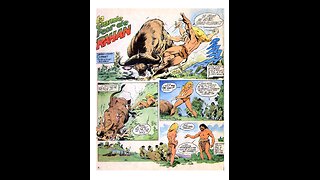 11:25
11:25
PukeOnABook
1 month agoRahan. Episode 119. By Roger Lecureux. The great fear of Rahan. A Puke (TM) Comic.
54 -

Steven Crowder
3 hours agoBREAKING: Russia Launches ICBM for First Time in History - What Happens Next?
205K141 -
 LIVE
LIVE
The Shannon Joy Show
4 hours ago🔥🔥While Americans Are Watching WWE Politics: Australia Is Ramping Up MANDATORY Digital ID🔥🔥
339 watching -
 LIVE
LIVE
LFA TV
14 hours agoTHE FIGHT IN ONLY BEGINNING! | LIVE FROM AMERICA 11.21.24 11am EST
5,611 watching -
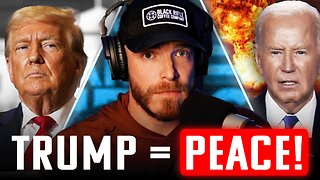 1:18:10
1:18:10
Graham Allen
4 hours agoPutin Vows Peace With Trump But WAR Under Biden!! + 400,000 Kids Are MISSING?!
74.4K141 -
 2:11:07
2:11:07
Matt Kohrs
12 hours agoMSTR Squeezes Higher, Bitcoin To $100k & Nvidia Post Earnings || The MK Show
30.3K1 -
 42:07
42:07
BonginoReport
5 hours agoNikki Haley's Hatred of Tulsi Gabbard Just Made Me a Bigger Fan (Ep.90) - 11/21/24
78.2K185 -
 28:41
28:41
Professor Nez
11 hours ago🚨BLOOD on their HANDS! The Man Biden & Kamala Flew In Finally Faces JUSTICE for Laken Riley
37.6K25 -
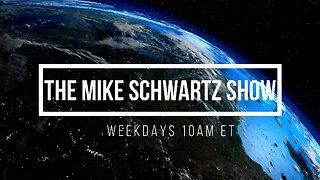 1:06:27
1:06:27
2 MIKES LIVE
3 hours agoThe Mike Schwartz Show 11-21-2024
37.1K -
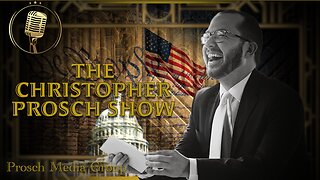 15:07
15:07
PMG
12 hours ago $0.69 earned"President Trump's Cabinet is Amazing!"
44.9K